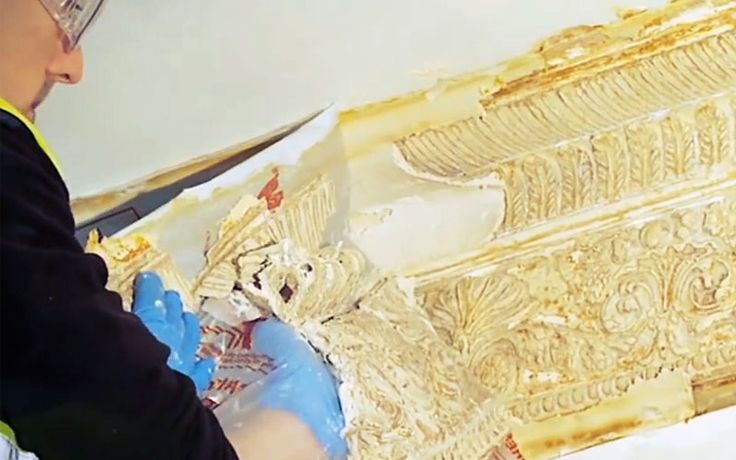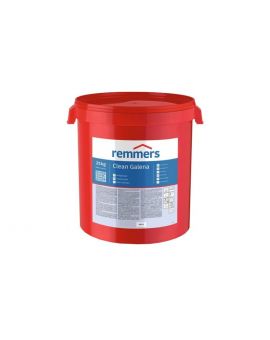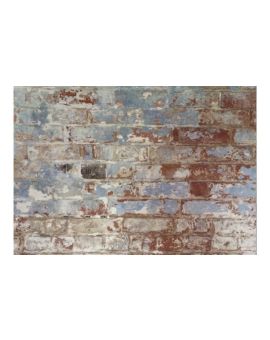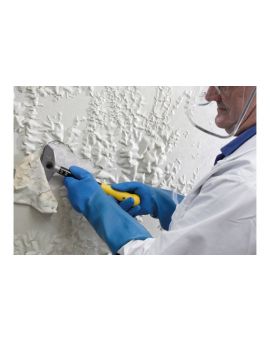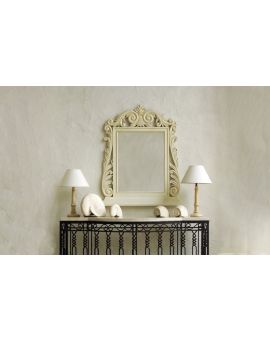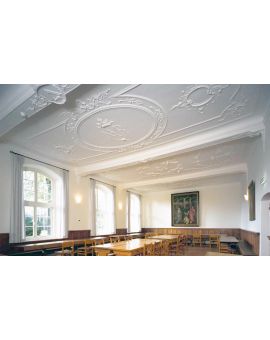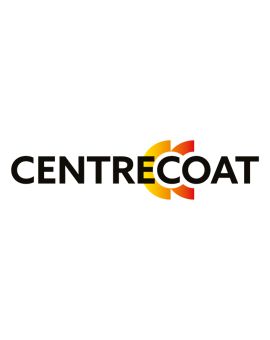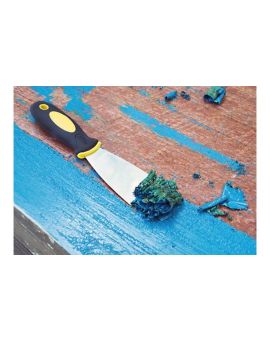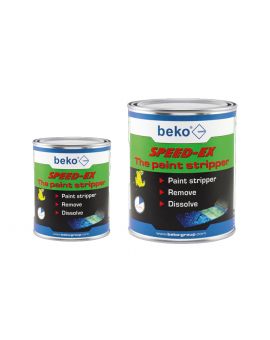£7.75 delivery on orders excluding certain products & postcodes *
Barrettine Peelaway 1
Barrettine Peelaway 1 is designed to effectively deal with problems that can arise from removing multiple layers of lead-based paint. It is particularly useful where crevices and profiles have allowed several layers of paint to build up, compared to the same paint on flat surfaces.
When removing old lead based paint by burning or sanding, it can allow lead particles to escape into the environment which can then lead to associated health risks. The stripping compound of Barrettine Peelaway 1 is formulated to turn the lead into lead hydroxide within the paste, allowing it to be safely disposed of without endangering either the environment or the user.
Best Uses
Restoring previously painted surfaces can be a very difficult and time consuming process. This is particularly the case where intricate shapes or pitted brickwork are present.
The Peelaway System will remove paint from many exterior and interior architectural surfaces. The chemicals within the Peelaway System do the hard work of stripping the paint, leaving you with minimal sanding and scraping, which makes Barrettine Peelaway very cost effective. Peelaway® is also architecturally approved for projects by English Heritage, National Trust and many other contractors that are working within the heritage industry. The system is frequently specified by architects as the only appropriate solution for paint removal where damage to the surface, or risk to the environment is an issue.
Application
Peelaway® stripping pastes are designed to be applied with the supplied spatula. Alternatively, a hawk and trowel, brushes or a roller can also be used. If required, the paste can also be sprayed with the use of the correct equipment. Please contact our Technical Team for further details if using this method. The method of application will depend on how thick the paste needs to be applied, for instance, a spatula or trowel will apply the paste thicker than a brush.
A test patch should always be carried out first to assess the suitability of the finish. The purpose of the test patch is to determine which Peelaway product is most suitable for any particular project, and to find out the best thickness and length of time for application of the poultice, before it dries out. However, if this does occur it is reversible.
Removing Difficult Peelaway Residue
First of all, the areas where the Peelaway is softest should be removed, to avoid them drying out further whilst tackling the more difficult areas. If the poultice is still soft enough to push a spatula into, the advice below for ‘Removing Soft Peelaway’ will be applicable. If not, then the section on ‘Removing Dried Peelaway’ is most appropriate. For any areas where the Peelaway or paint breakdown product has run onto the floor, using warm soapy water and a sponge should be sufficient, as this should be water soluble.
Removing Soft Poultice
Only remove a manageable section of blanket and poultice at a time, then clean back to a bare surface before proceeding to the next area. This avoids the poultice drying in other areas before removal. Before removing the Peelaway blanket, first ease a spatula underneath the poultice, as close to the surface as possible. Following this, use the spatula to push a path through the poultice whilst gently lifting the blanket. Once the bulk of the poultice and blanket have been removed, take a stiff bristled brush (e.g. washing up brush or broom) and a bucket of warm water, and dip the brush into the water, then use the damp brush to loosen residue from the crevices.
Rinse the brush in the bucket as needed and repeat until the bulk of the poultice has been removed. A towel or absorbent pad on the floor can help to catch any drips. For smaller areas, a toothbrush sized brush can work well. Finally, wipe down with clean water and a sponge, and allow to dry. Please note – some surfaces such as plaster, can be sensitive to moisture and so should not be soaked.
Removing Dried Poultice
The dried poultice will soften when enough moisture returns to it, but it will only absorb moisture slowly. To rehydrate the poultice, there are two options:
- Reapply another coat of Peelaway on top, then cover with the blanket again for several hours
- Spray/sponge the residue with warm water, then cover with the blanket for 5 minutes
Repeat until rehydrated.
Once the poultice has softened enough to ease a spatula in, follow the instructions for soft poultice. Once all Peelaway residue has been removed: Wash down the surface, as per the instructions on the Peelaway container label.
Once the surface has dried follow the instructions on the label for the Peelaway Neutraliser. Further information can be found on the Peelaway website here: https://peelaway.co.uk/167/faqs
Surface and Environment
Barrettine Peelaway 1 is formulated to remove up to 32 coats of old toxic lead paint from brickwork, cement masonry, steel, plain and ornate plaster ceilings, cornices, iron and plain or carved turned woodwork.
Peelaway® 1 is a high pH product, so it can penetrate and react with the oil/lead content of multi layers of older coatings, therefore the stripped surface should be neutralised with a weak solution of acetic acid (this is supplied with the packs), and left to dry thoroughly before repainting. During very damp periods/conditions such as Autumn through to Spring, (particularly on exterior substrates), moisture containing residues of Peelaway® 1 may bleed out of the substrate at a later date, thus raising the alkaline pH value once again. This could affect the repainted surface. As a precaution, if Peelaway® 1 is used and the surface is to be repainted, we would always recommend using a good quality alkaline resistant acrylic sealer/primer prior to repainting.
IMPORTANT NOTE: Peelaway® 1 should not be used on gesso (a form of putty) mouldings sometimes used on carved fireplace surrounds, or to remove paint from veneers, plywoods, aluminium or unskimmed drywall and may discolour certain hardwoods. e.g Oak, Mahogany, Teak etc (for some of these, Peelaway® 7 may be suitable (not all e.g. gesso, old veneer).
Additionally, neither Peelaway® 1 or Peelaway® 7 will remove certain two pack epoxy coatings, urethanes, chlorinated rubber, baked enamels or masonry cement based paints. If you are unsure if Peelaway 1 or 7 would be suitable for your needs, please contact our Technical Department for further information and advice.
Features and Benefits
- The unique paste formulation works effectively on the most intricate paint removal projects
- It is much safer and more user friendly, having very little odour and naturally degradable.
- Prevents the escape of unwanted chemicals into the environment
- Kit contains Neutraliser, Blankets and Spatula
Technical Info
| Components: | Single Pack |
| Type: | Paint & Varnish removal |
| Finish: | n/a |
| Stock Colours: | White |
| Tintable: | No |
| VOC Content: | - |
| Volume Solids: | - |
| Suitable Substrates: | Stone, Ornate Plaster, Brick, Wood, Metal |
| Application Method: | Spatula supplied, Hawk & Trowel, Brush, Roller or Spray |
| Theoretical Coverage: | Approximately 0.8m2 per Kg |
| Thickness | Dependant on the age and thickness of the coating being removed |
| Wait Time: | Dependant on the age and thickness of the coating being removed |
| Overcoatable: | - |
| Fully Cured: | Do not allow Peelaway 1 to cure completely |
| Cleaner: | Once all Peelaway residue has been removed: Wash down the surface, as per the instructions on the Peelaway label |
| Shelf Life: | See tub for stoarge information and shelf life. |
| Packaging: | Available in 5 and 15 Kg tubs |
